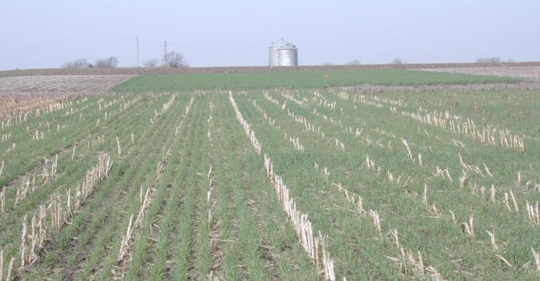Explore our blog featuring articles about farming and irrigation tips and tricks!
What We’ve Learned About Corn, Nitrogen And Rye Cover Crops

By: John Sawyer
Nitrogen fertilization is important for achieving high corn yields, with optimal application rates essential for maximizing economic return and minimizing impact on water quality. Winter cereal rye as a cover crop has been shown many times to reduce the concentration of nitrate-N leaving fields in drainage water — a distinct advantage for reducing the environmental footprint of corn and soybean production systems.
A common question is what adjustment should be made to the rate of nitrogen applied for the corn crop that follows winter cereal rye? Because a rye cover crop accumulates plant-available nitrogen from the soil during fall and spring, a related question is whether enough nitrogen is retained that the fertilization rate for corn could be reduced.
Research was conducted in 2009-13 at five Iowa State University Research and Demonstration Farms to study the effect of a winter cereal rye cover crop in no-till corn following soybeans. Rye was drilled after soybean harvest, terminated in the spring with herbicide application (at least seven days before corn planting) and nitrogen (liquid UAN) fertilizer injected within two weeks after planting.
Across the study period, the economic optimum nitrogen rate was found to be similar with or without the rye cover crop (157 pounds of N per acre with rye and 151 pounds of N per acre without rye). The average corn yield was 5% lower following the rye cover crop, 179 bushels per acre with rye and 188 bushels per acre without rye. Why would there be no difference in optimal nitrogen rate with and without the rye cover crop? The main reason is the low rye biomass and concurrent low nitrogen amount.
Stay up to date on all T-L news and get alerts on special pricing!


